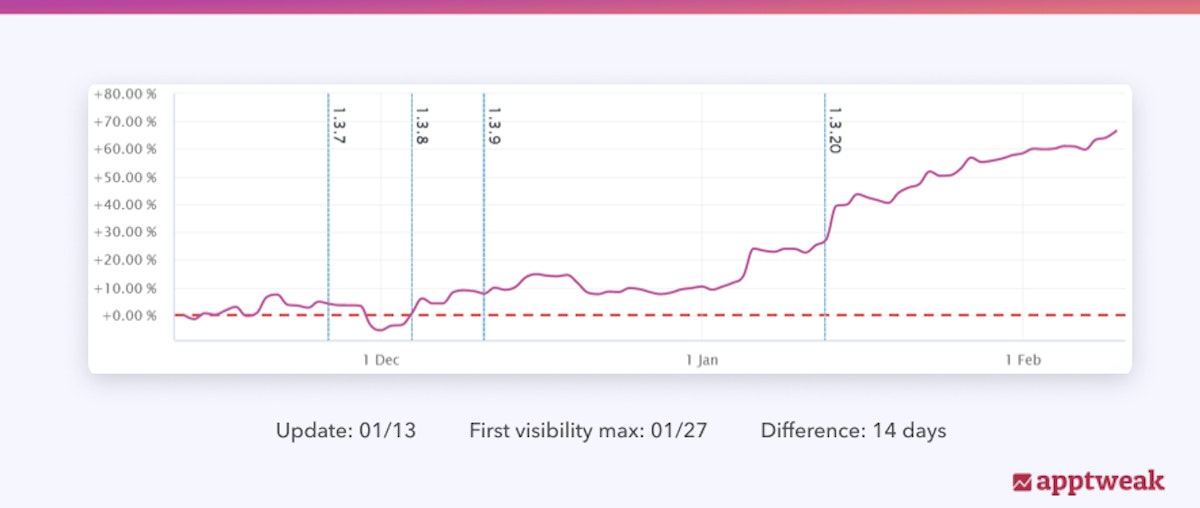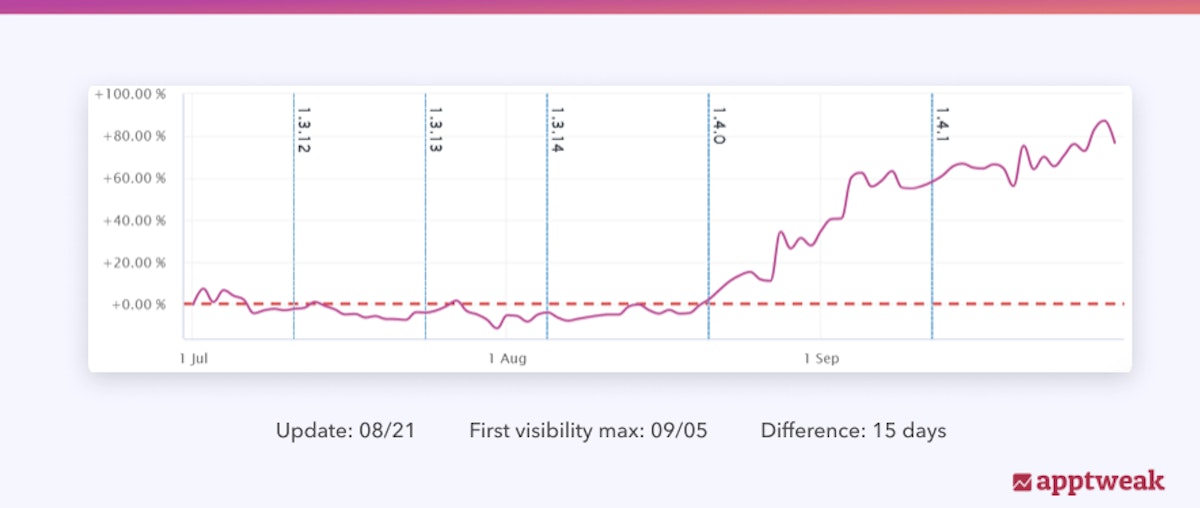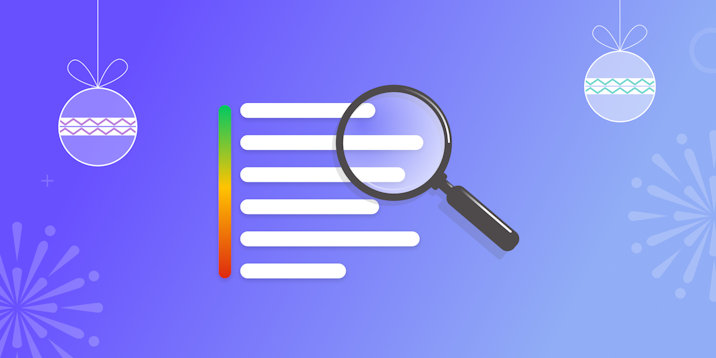
Measuring the Effects of App Updates on Keyword Visibility
At its core, App Store Optimization (ASO) requires updating apps and their store listings with the purpose of increasing visibility on the app stores and therefore increasing downloads. ASO is not a one-time thing, but rather a continuous process that must be constantly reevaluated according to the ever-changing app store algorithms. As a result, your app’s success requires you to update your app from time to time – but you must tread carefully: How often should you be updating your app? What changes should you be making? How will these changes affect your app’s ranking?
This is a guest blog by Moburst.
What is keyword visibility?
Keyword visibility is a score that combines the volume and ranking of keywords. At Moburst, we determine keyword visibility on AppTweak because that’s where we store our keyword lists – a score is therefore created per list. AppTweak takes all of the keywords from a particular list and shows a graph representing keyword visibility.

Do app updates affect keyword visibility?
From our years of industry expertise and extensive research, we have discovered that keywords take between 14-25 days to reach their full post-update ranking potential. This is because each app update forces the algorithm to crawl through the changes and look for new keywords. As a result, updating the metadata too often can actually hurt an app’s visibility because the algorithm will start crawling through the updated metadata before the previous keywords have had time to reach their full ranking potential. Even worse, each crawl is usually accompanied by a drop in visibility.
 For some context, on iOS, every time you update any part of the app or app page, a new app version is created. It doesn’t matter whether you only updated the metadata or screenshots – a new version will be created. AppTweak recommends only updating the app version every four to six weeks (at most).
For some context, on iOS, every time you update any part of the app or app page, a new app version is created. It doesn’t matter whether you only updated the metadata or screenshots – a new version will be created. AppTweak recommends only updating the app version every four to six weeks (at most).
 We used AppTweak’s Metadata Timeline to identify when each of our clients updated their metadata (title, subtitle, or long description). We then looked at the Visibility Graph for the keywords implemented, with a time frame spanning from a few weeks before to a few weeks after the metadata updates. On the graph, we measured the number of days between the initial update and the first visibility peak after.
We used AppTweak’s Metadata Timeline to identify when each of our clients updated their metadata (title, subtitle, or long description). We then looked at the Visibility Graph for the keywords implemented, with a time frame spanning from a few weeks before to a few weeks after the metadata updates. On the graph, we measured the number of days between the initial update and the first visibility peak after.
Understand how often you should update your app’s metadata on the App Store and Google Play
Observation 1: Keywords behave differently on iOS vs Android
There were different outcomes for iOS and Android. It takes longer for visibility scores to rise after metadata updates on Android – an average of 15 days for our clients. On iOS, the visibility score for our clients took an average of 9 days to rise after a metadata update. Not only does this mean that we have to wait an average of two weeks before analyzing the results of updates and implementing new changes, but we would ideally wait even longer to give keywords time to reach their full ranking potential.
Observation 2: Visibility scores will drop initially
We reaffirmed that the visibility score always goes down after an update. As a result, if you update your app too often before the score has the chance to rise, your score will just keep decreasing and decreasing.
Observation 3: Keyword stability depends on update frequency
We have a hypothesis that the time it takes for the visibility score to hit its first peak after a metadata update is connected to the number of updates an app does. If an app updates its metadata each month, the keywords will take less time to stabilize. On the other hand, if you update the metadata once every six months, for example, your keywords will take a bit more time to stabilize.
If the metadata is updated regularly, the minimum number of days for the visibility score to reach its first peak is 9 for iOS.
Observation 4: There are optimal update frequencies
To keep improving an app’s visibility, you should be wary of the number of updates you’re doing: there’s a fine line and you want to strike the right balance. While you don’t want to make the algorithms crawl through the metadata too often, you shouldn’t be updating your app less than every 4-6 weeks. This means only updating your metadata when you’re most certain these updates will yield higher rankings.
Observation 5: Wait enough time to assess keyword performance
We’re usually only able to assess keyword performance 3-4 weeks (at the earliest) after metadata updates. Only at this stage are we able to generate new, data-based keyword recommendations to continuously improve the app’s visibility. This is because we need to give the algorithm time to crawl through the metadata, and then move past the initial visibility drop and into the time frame where the visibility score has risen again. So, it’s not worth making metadata updates in between because any changes implemented before this time frame cannot come from conclusive data, and is therefore not sure to improve your app’s ranking (which is the main aim of the game, right?).
Conclusion
Part of the job as an ASO analyst is research. In our dynamic industry, it’s important to be on top of algorithm changes and app store updates. That’s why we constantly research hypotheses to make the discoveries that keep our work at Moburst industry-leading. Without the research that forms the backbone of our client work and reports, we wouldn’t be able to succeed in the way we consistently do for our clients. With the help of ASO tools like AppTweak, we can back up all of our ASO decisions with measurable data to ensure the best results.
Start making data-driven decisions to increase your app’s visibility on the App Store and Google Play.



 Oriane Ineza
Oriane Ineza
 Lucas Riedinger
Lucas Riedinger

 Suleika Vanmaele
Suleika Vanmaele
